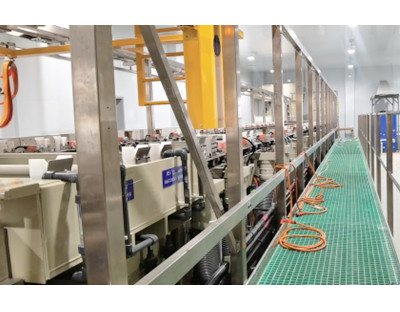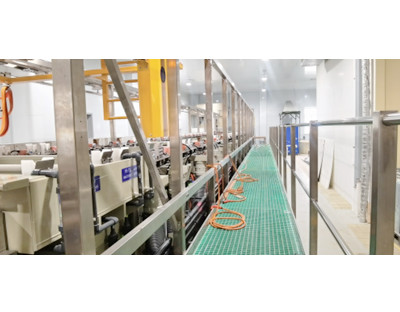Electroplating is the process of plating a thin layer of other metals or alloys on certain metal surfaces using the principle of electrolysis. According to the composition of the coating, the electroplating process can be divided into five categories: chrome plating, copper plating, cadmium plating, tin plating, and zinc plating. Below are the introduction of the principles and characteristics of the five major categories of electroplating processes.
1. Chrome plating
Chromium is a silver-white metal with microstrip sky blue. Although the electrode potential is very negative, it has strong passivation properties, and it is quickly passivated in the atmosphere, showing the properties of precious metals, so the chrome plating layer of iron parts is a cathode plating layer. The chromium layer is very stable in the atmosphere and can maintain its luster for a long time. It is very stable in corrosive media such as alkali, nitric acid, sulfide, carbonate and organic acid, but it is soluble in hydrohalic acid such as hydrochloric acid and hot concentrated sulfuric acid.
The chromium layer has high hardness, good wear resistance, strong reflective ability and good heat resistance. There is no obvious change in gloss and hardness below 500°C; when the temperature exceeds 500°C, it begins to oxidize and discolor; when it exceeds 700°C, it begins to soften. Due to the excellent performance of the chrome layer, it is widely used as the outer layer and functional coating of the protective-decorative coating system.
2. Copper Plating
The copper plating layer is pink, soft, has good ductility, electrical and thermal conductivity, and is easy to polish. After proper chemical treatment, decorative colors such as bronze, copper green, black and natural color can be obtained. Copper plating is easy to lose its luster in the air, and when it reacts with carbon dioxide or chloride, a layer of basic copper carbonate or copper chloride film is formed on the surface, and brown or black copper sulfide is formed by the action of sulfide. Therefore, as a decorative The copper plating layer needs to be coated with an organic cover layer on the surface.
3. Cadmium plating
Cadmium is a silver-white lustrous soft metal. Its hardness is harder than tin, softer than zinc, and its plasticity is good. It is easy to forge and roll. The chemical properties of cadmium are similar to those of zinc, but it is insoluble in lye, soluble in nitric acid and ammonium nitrate, and very slowly dissolved in dilute sulfuric acid and dilute hydrochloric acid. Cadmium vapor and soluble cadmium salts are toxic, and cadmium pollution must be strictly prevented. Because cadmium pollution is very harmful and expensive, zinc plating or alloy plating is usually used to replace cadmium plating. The types of cadmium plating solutions that are widely used in domestic production are: ammonia carboxyl complex cadmium plating, acid sulfate cadmium plating and cyanide cadmium plating. In addition, there are pyrophosphate cadmium plating, alkaline triethanolamine cadmium plating and HEDP cadmium plating.
4. Tin plating
Tin has a silvery white appearance, an atomic weight of 118.7, a density of 7.3g/cm^3, a melting point of 231.89°C, and a divalent and tetravalent valence, so the electrochemical equivalents are 2.12g/Ah and 1.107g/Ah, respectively. Tin has the advantages of corrosion resistance, non-toxicity, easy iron welding, softness and good ductility. Tin coating has the following characteristics and uses.
(1) High chemical stability;
(2) The standard potential of tin in the electrochemical sequence is positive, which is a cathodic coating for steel, and the substrate can be effectively protected only when the coating has no pores;
(3) Tin has good conductivity and is easy to solder;
(4) Tin begins to crystallize from -130 °C and begins to mutate, and at -300 °C, it will be completely transformed into a crystal form of allotrope, commonly known as “tin plague”, and the properties of tin have been completely lost at this time;
(5.) Like zinc and cadmium coatings, tin can grow into whiskers under high temperature, humidity and airtight conditions, which is called long hair; The glossy patterned tin layer can be used as a decorative coating for daily necessities.
5. Zinc plating
Zinc is soluble in acid and alkali, so it is called amphoteric metal. Zinc hardly changes in dry air. In humid air, a basic zinc carbonate film will form on the zinc surface. In the atmosphere containing sulfur dioxide, hydrogen sulfide and marine, the corrosion resistance of zinc is poor, especially in the atmosphere of high temperature and high humidity containing organic acid, the zinc coating is easily corroded. The standard electrode potential of zinc is -0.76V. For the steel substrate, the zinc coating is an anodic coating, which is mainly used to prevent the corrosion of steel, and its protective performance has a great relationship with the thickness of the coating.
The protective and decorative properties of zinc coating can be significantly improved after passivation treatment, dyeing or coating with light protectant. With the development of galvanizing process and the adoption of high-performance galvanizing brighteners, galvanizing has entered protective-decorative applications from purely protective purposes.
There are two types of zinc plating solutions: cyanide baths and cyanide-free baths. The cyanide bath is divided into microcyanide, low cyanide, medium cyanide, and high cyanide. Cyanide-free baths include alkaline zincate baths, ammonium salt baths, sulfate baths, and ammonia-free chloride baths. The cyanide zinc plating solution has good uniform plating ability, and the obtained coating is smooth and delicate, and has been used for a long time in production. However, due to the high toxicity of cyanide and serious environmental pollution, low-cyanide, micro-cyanide and cyanide-free zinc plating solutions have been adopted.





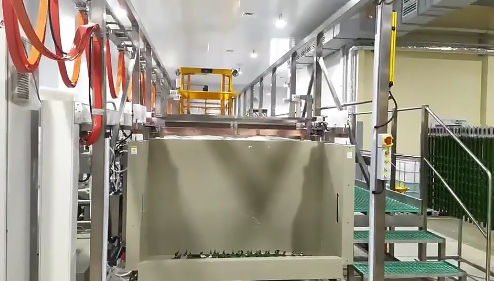
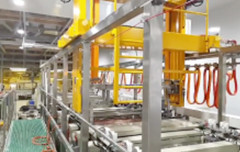
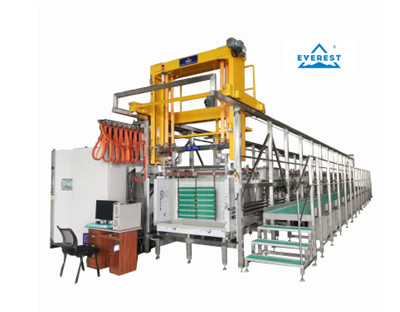
 Mar. 08, 2022
Mar. 08, 2022 